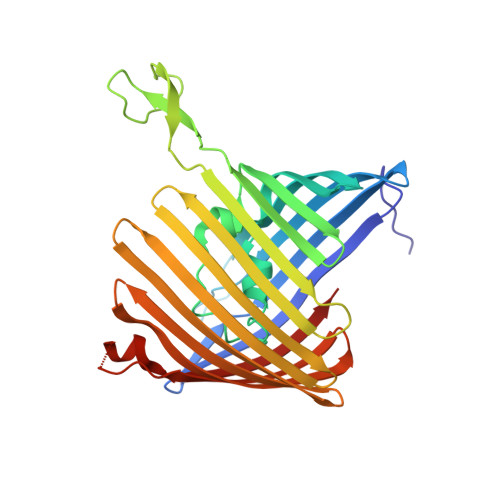Unusual Constriction Zones in the Major Porins OmpU and OmpT from Vibrio cholerae.
Pathania, M., Acosta-Gutierrez, S., Bhamidimarri, S.P., Basle, A., Winterhalter, M., Ceccarelli, M., van den Berg, B.(2018) Structure 26: 708-721.e4
- PubMed: 29657131
- DOI: https://doi.org/10.1016/j.str.2018.03.010
- Primary Citation of Related Structures:
5OYK, 6EHB, 6EHC, 6EHD, 6EHE, 6EHF - PubMed Abstract:
The outer membranes (OM) of many Gram-negative bacteria contain general porins, which form nonspecific, large-diameter channels for the diffusional uptake of small molecules required for cell growth and function. While the porins of Enterobacteriaceae (e.g., E. coli OmpF and OmpC) have been extensively characterized structurally and biochemically, much less is known about their counterparts in Vibrionaceae. Vibrio cholerae, the causative agent of cholera, has two major porins, OmpU and OmpT, for which no structural information is available despite their importance for the bacterium. Here we report high-resolution X-ray crystal structures of V. cholerae OmpU and OmpT complemented with molecular dynamics simulations. While similar overall to other general porins, the channels of OmpU and OmpT have unusual constrictions that create narrower barriers for small-molecule permeation and change the internal electric fields of the channels. Together with electrophysiological and in vitro transport data, our results illuminate small-molecule uptake within the Vibrionaceae.
Organizational Affiliation:
Institute for Cell and Molecular Biosciences, The Medical School, Newcastle University, Newcastle Upon Tyne NE2 4HH, UK.















